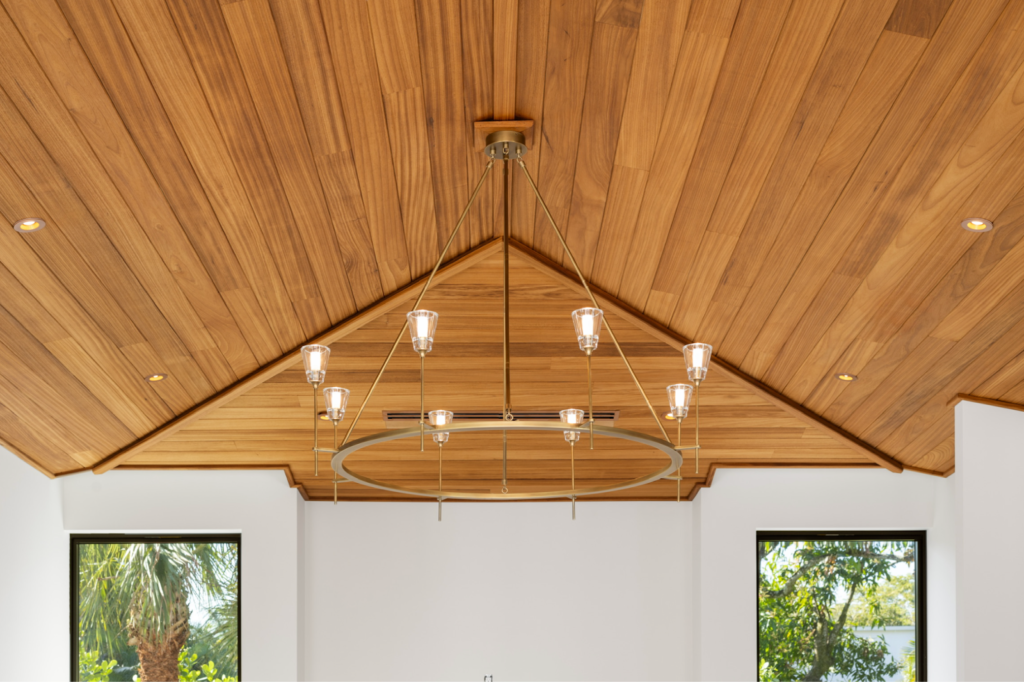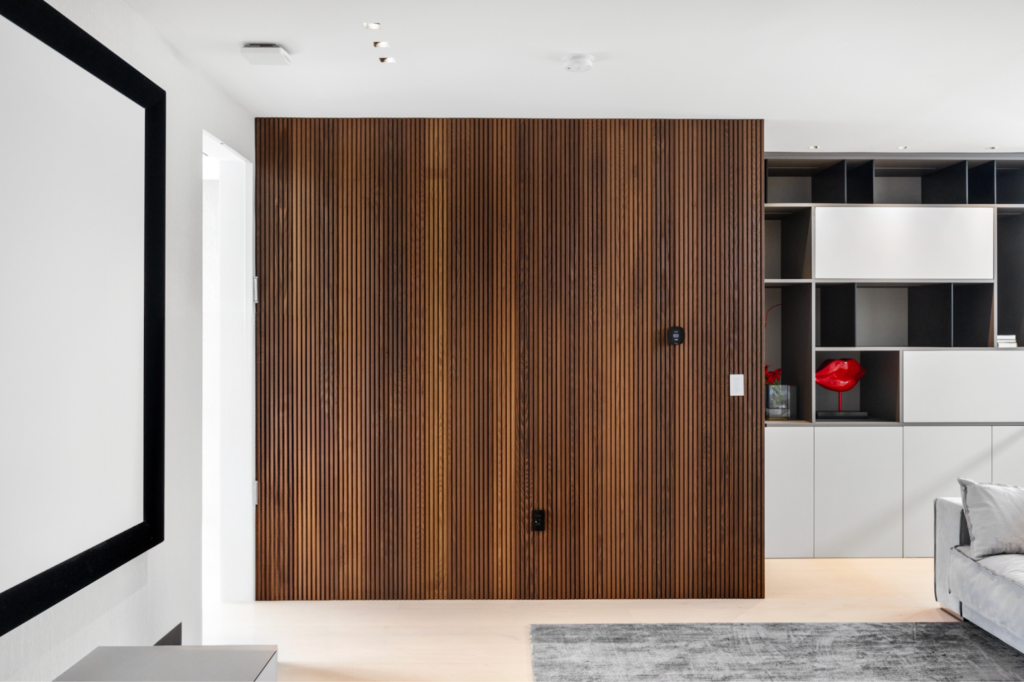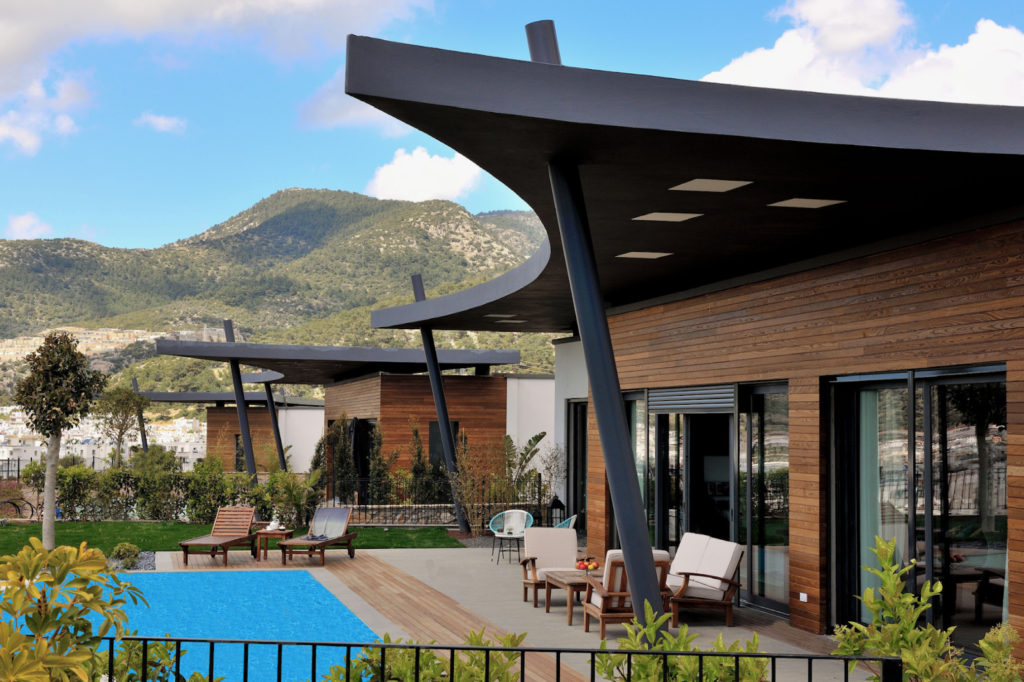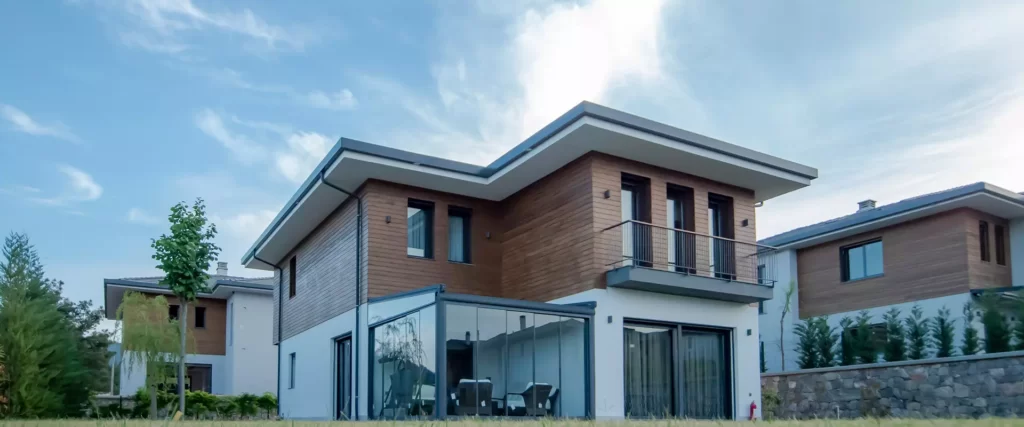Thermally modified wood has become a preferred material in modern construction.
However, finishing thermally modified wood is a critical step in protecting it from the elements—whether it be for decking, cladding, or interior applications.
Ready to learn why and how to do it?
Let’s get started.
Why Finishing Thermally Modified Wood Protects It
When wood goes through the thermally modified wood process, it experiences an extremely high-temperature that alters its cellular structure.
As a result, the reduction in hydroxyl groups, which normally attract moisture, makes the wood more resistant to water absorption—helping prevent decay, mold, and rot.
This cellular change also enhances the wood’s dimensional stability by making it less prone to warping or swelling.
However, although thermally modified wood is naturally durable, finishing thermally modified wood with oils, stains, and varnishes helps ensure that its already long-lasting performance, especially in harsh outdoor environments, is maintained.
Step-by-Step Guide to Finishing Thermally Modified Wood

Here’s how you finish thermally modified wood step by step:
1. Prepare the surface
Before finishing thermally modified wood, proper surface preparation is key.
In fact, you should clean the wood to remove dust, debris, and any residue from previous treatments, and then sand the surface lightly to create a smooth, even base for finishing products to adhere to.
Practical Tips
When working with thermally modified wood, the quality of the finish depends heavily on how the surface is prepared and the conditions during application. Below are practical tips to ensure that your project delivers the best possible results:
- Optimal Weather Conditions: For best results, apply finishes in temperatures between 50°F and 85°F with low humidity.
- Application Techniques: Use brushes, rollers, or sprayers depending on the type of finish and the surface area. For large outdoor decks, sprayers can speed up the process, but always follow up with a brush to ensure the finish penetrates evenly.
2. Apply Stains and Oils
Stains and oils are popular choices for finishing thermally modified wood, particularly in outdoor settings where environmental factors like UV radiation, moisture, and heat can significantly impact the longevity of the wood.
But each finish type offers different benefits:
Pigmented Oils for High-UV Areas
In regions with intense sunlight, such as open outdoor decks, pigmented oils are highly effective in blocking UV rays. These oils penetrate deeply into the wood fibers to help protect the wood from fading.
For long-term durability in sunny climates, pigmented oils are an optimal choice as they maintain color stability better than clear oils.
Clear Oils for Moderate Weather Conditions
Clear oils, on the other hand, highlight the natural grain and beauty of the wood, which make them ideal for indoor use or shaded areas where UV exposure is minimal.
While they provide water resistance, they may require more frequent maintenance in outdoor applications, especially in sunny or rainy regions, because of their lower UV protection compared to pigmented oils.
Using Paints and Varnishes
For applications requiring maximum protection, such as in high-traffic areas, paints and varnishes offer a more robust barrier against environmental stress.
Paints provide full coverage, while semi-transparent varnishes maintain the wood’s natural look with added durability.
- Paint Application: Use high-quality outdoor paints for cladding and fences exposed to weather extremes. These coatings seal the wood, preventing moisture ingress and UV damage.
- Varnishing: Ideal for maintaining the wood’s natural grain, varnishing offers a clear, protective layer that shields the surface from moisture while allowing the wood’s character to shine through.
Finishing Thermally Modified Wood Surfaces Indoors and Outdoors with The Correct Treatment

Depending on whether you are finishing thermally modified wood indoors or outdoors, you need to understand that there are different finishes for each application. For example:
Outdoor Decking and Cladding
Thermally modified wood used outdoors, such as for decking and cladding, requires finishes that can withstand rain, snow, sun, and ice.
Of course, the process of thermal modification alters the wood at the cellular level, but finishes like UV-protective oils and stains penetrate deeper into the fibers and offer additional protection. For cladding, clear varnishes or semi-transparent paints work well to create a durable barrier that maintains the wood’s natural aesthetic.
Interior Applications
For interior use, especially in high-traffic areas like flooring or paneling, thermally modified wood should be finished with clear varnishes or oil-based finishes.
Oil-based finishes provide moisture resistance and protect the wood without altering its natural beauty.
Make Finishing Thermally Modified The Best It Can Be

For optimal performance, choosing the right finish for thermally modified wood requires balancing durability, moisture resistance, and design preferences.
Whether your project calls for the deep, rich hues of Pine, the smooth elegance of Ash, or the versatility of Ayous, you need to select the proper finish that provides thermally modified wood more than just aesthetic value.To do so, take a look at the different thermally modified wood species so that you can make your projects—and finish the wood—the best it can be.

